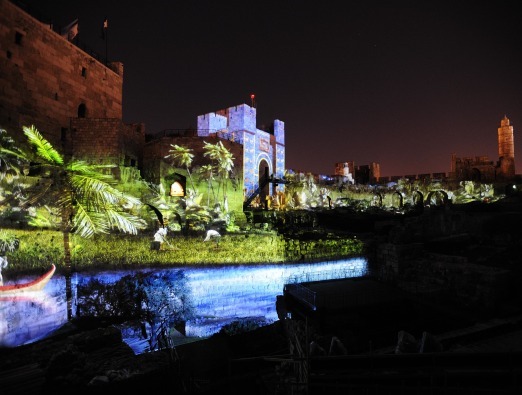The Tower of David
Contrary to its name, the Tower of David possesses no connection with the actual King David. Its origins are uncertain, but most likely date from Jerusalem’s Second Temple Period in the 2nd century B.C.This event has ended
Click here to view this week top events >
Contrary to its name, the Tower of David possesses no connection with the actual King David. Its origins are uncertain, but most likely date from Jerusalem’s Second Temple Period in the 2nd century B.C. There is a possibility that the earliest fortifications were built by King Hezekiah, who holds a prominent role in the history of Jerusalem’s kings as one of its wisest and most devout.
But it was when King Herod ascended the throne that the fortress was transformed into more than just walls. Herod wished for the fortress to protect his magnificent palace on Mount Zion, and built several towers which endure to this day.
In 70 A.D. when the Romans ravaged Jerusalem, Herod’s palace was destroyed. The fortress of the Tower of David is all that remains of Herod’s architectural wonder, which was said to have been grander even than the Holy Temple. According to legend, Titus of Rome spared the Tower of David so it would stand as a testimony to the might of the city he had conquered.
A Fortress of Many Faces
Many more permutations of the Tower of David were to follow. When Christianity became the official religion of the Roman Empire in the 4th century, monks inhabited the fortress. Centuries later, when Muslims conquered Jerusalem, they added significant reinforcements to the fortifications which included a citadel. The Tower of David was later conquered by Christian armies during the Crusades and became the seat of Christian rulers in medieval Jerusalem.
For hundreds of years the fortress changed hands, with segments being added and destroyed. The result is a complex amalgam of ancient, medieval, European and Middle Eastern styles of architecture.
Today, the Tower of David stands in one of the most colorful and busy sections of the Old City, near the Arab souq and within walking distance of all the Old City’s major sights.
Despite the violence of its history, Herod’s ancient towers within the Tower of David are preserved to this day. Herod was an effective but famously cruel ruler, with a complex emotional life. One of his most notorious acts was to kill his own wife, Miriam the Hasmonean; yet in his love for her, he erected a tower in her honor. Miriam had the misfortune to be wed to a king who felt threatened by the popularity of the Hasmonean dynasty, even as he was paradoxically still proud to be married to its princess. She was only one of many people who paid for Herod’s ambition with their lives.
2000+ tips and recommendations
Alright, we'll be the first to admit it. Jerusalem's often chilly and often damp winters don't exactly exude...
In a region known for being one of the first in which early humans settled after leaving Africa, and in a city populated...
Looking for a place to begin your morning in luxury and style? Look no further than the American Colony Hotel, which offers...
Jerusalem, the city where kings ruled and sultans sat is no stranger to luxury. Today, even the visiting yeoman can find...
Jewish tradition holds that in the times of the First and Second Temples, all the Jewish people would gather in Jerusalem...
Technically, it's possible to visit Jerusalem without going to the Old City, but it would be hard to say you'd...
Looking for a place to begin your morning in luxury and style? Look no further than the American Colony Hotel, which offers...
The faithful may rhapsodize about the spiritual highs to be reached in the Old City; culture cognoscenti groove on the...
Once upon a time, options for eating out in Jerusalem were limited to local common phenomena such as falafel and schwarma,...
No results to show





|
Text text text
|
||